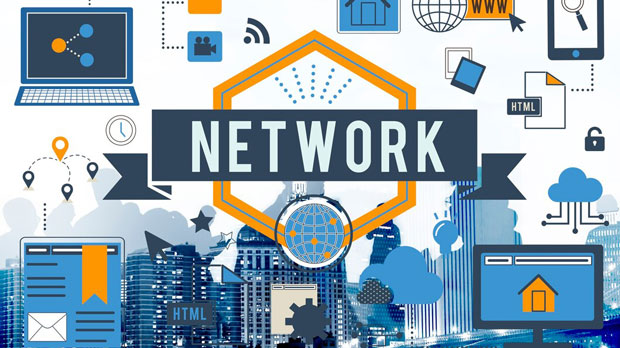Managing a residential proxy IP pool is essential for businesses relying on data scraping, automation, or geo-targeted services. PYPROXY’s API offers a robust solution for dynamically managing residential proxy ip pools, ensuring efficient, flexible, and scalable IP rotation. By leveraging PYPROXY, users can access and manage a wide range of proxy ips with ease, adjusting their pool sizes, IP sources, and rotation strategies based on real-time needs. This approach ensures enhanced security, better performance, and more seamless user experiences. Below, we explore how to harness the full potential of PYPROXY’s API for dynamic management of residential proxy IP pools. Understanding the Basics of Residential Proxy IP PoolsBefore diving into the specifics of managing IP pools with PYPROXY’s API, it’s crucial to understand the concept of residential proxies and why they are important for various business functions. Residential proxies are IPs assigned by Internet Service Providers (ISPs) to homeowners. Unlike data center proxies, residential proxies are less likely to be flagged or blocked because they appear as real users' traffic. These proxies are used in tasks like web scraping, ad verification, social media automation, and bypassing geographical restrictions. Residential proxies offer reliability and anonymity, making them vital tools for businesses that need to scale their web interactions.The Role of PYPROXY API in Managing Residential Proxy PoolsPYPROXY’s API enables users to dynamically manage residential proxy IP pools by providing full control over IP assignments, rotations, and configurations. The API facilitates real-time adjustments, making it possible for businesses to manage their proxy pool efficiently. Here’s how PYPROXY’s API helps in managing residential proxy IP pools:1. IP Pool Management: The API allows users to add, remove, or update proxy IPs within their pool. This flexibility is crucial when the demand for proxy IPs fluctuates or when there’s a need to optimize the pool for specific regions or tasks.2. Dynamic IP Rotation: One of the most valuable features of PYPROXY’s API is its ability to rotate proxies automatically. This feature allows users to switch IP addresses at predetermined intervals or based on specific conditions, reducing the risk of detection or blocking by websites.3. Geographic Targeting: Users can specify the geographic locations of proxies they want to access. This is particularly useful for businesses that need proxies from specific regions to test website responses, carry out local scraping, or bypass geo-restrictions.4. Scaling the IP Pool: With PYPROXY, scaling the proxy pool is seamless. As business needs grow, users can increase their pool size to handle more requests or ensure better load balancing. The API allows for rapid scaling of residential proxies, ensuring businesses never run out of resources.5. Monitoring and Analytics: PYPROXY’s API offers analytics features, enabling users to track the performance of their proxy pool. By monitoring success rates, failures, and request speeds, businesses can optimize their IP management strategy for better results.Key Features of PYPROXY API for Dynamic IP Pool ManagementThe following are key features that make PYPROXY API stand out in managing residential proxy IP pools:1. Real-Time Proxy Rotation: This feature ensures that IP addresses are rotated at a high frequency, making it difficult for websites to identify patterns in requests. By continuously rotating the proxy IPs, the chances of getting blocked are significantly reduced.2. High Availability and Reliability: PYPROXY provides high availability of proxies, which means businesses can rely on the service to be up and running without downtime. The reliability of proxies is crucial for businesses that rely on continuous access to data or services.3. Customizable Rotation Rules: Users can define their proxy rotation rules based on session length, time intervals, or specific events. This flexibility ensures that the proxies are rotated in a way that suits the needs of the business and reduces detection risks.4. Geo-Targeted Proxies: With PYPROXY’s API, businesses can access proxies from specific countries or regions. This is important for conducting localized web scraping, performing regional tests, or bypassing regional restrictions on websites.5. Performance Optimization: The API allows for detailed monitoring of each proxy’s performance, including success rates and speeds. This allows businesses to identify underperforming proxies and replace them quickly, ensuring that the proxy pool remains efficient and reliable.How to Use PYPROXY API to Dynamically Manage Proxy IP PoolsTo effectively use PYPROXY’s API for managing residential proxy IP pools, businesses should follow these steps:1. Set Up Your API Credentials: The first step is to set up API credentials, which include your API key and other required details. This will allow you to authenticate your requests and interact with the API.2. Integrate API into Your System: After obtaining your API credentials, integrate the API into your existing systems, whether it’s a web scraping platform, automation tool, or any other software that requires proxy management.3. Add and Remove Proxies Dynamically: Use the API to dynamically add or remove proxies from your pool. This can be done via a simple API call to ensure that your pool always has the right number of IPs based on your current needs.4. Configure Rotation Rules: Set rotation rules through the API to automatically rotate proxies at regular intervals or according to predefined conditions. This will ensure that your proxies stay fresh and are less likely to be detected by the target websites.5. Monitor and Analyze Performance: Use the monitoring tools within the API to track the performance of your proxy pool. Analyzing success rates, speeds, and failure rates allows you to make adjustments to your proxy pool, ensuring that it meets your performance needs.Benefits of Using PYPROXY API for Proxy ManagementThere are several advantages to using PYPROXY’s API for managing residential proxy IP pools:1. Increased Efficiency: Automating proxy rotation and management through PYPROXY’s API allows businesses to run operations more efficiently, without manual intervention.2. Scalability: As businesses grow, their proxy needs may expand. PYPROXY’s API ensures that businesses can scale their IP pool without disruption, offering a flexible solution that grows with them.3. Reduced Risk of Detection: With dynamic IP management and rotation, the risk of detection by websites is minimized, allowing businesses to perform large-scale scraping or automation tasks with minimal interruptions.4. Cost Savings: By effectively managing proxy usage and minimizing downtime or inefficiencies, businesses can reduce the overall costs associated with proxy services.5. Better User Experience: For businesses offering services such as web scraping or geo-targeted content delivery, the API ensures a better experience for end-users by providing reliable, fast, and secure proxy access.In conclusion, managing residential proxy IP pools effectively is crucial for businesses that rely on proxy services for tasks like web scraping, automation, and geo-targeting. PYPROXY’s API provides a dynamic, scalable, and efficient solution for managing residential proxies, offering businesses the flexibility to rotate IPs, monitor performance, and scale their proxy pools based on demand. With its high availability, customizable rotation rules, and geographical targeting options, PYPROXY’s API is an invaluable tool for businesses seeking to optimize their use of residential proxies.
Jun 04, 2025





















































